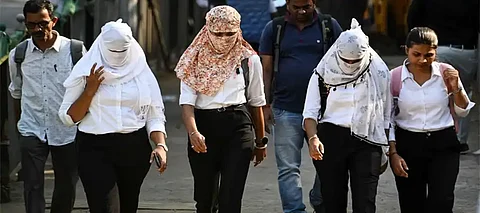

Punjab is grappling with an intense heatwave as temperatures rise across the state. The scorching 'garmi' (heat) is making daily life difficult for the public in so many ways. Amidst the worsening of heatwaves, the India Meteorological Department (IMD) has issued a yellow alert in Punjab, citing severe heatwaves over the next three days. Residents have been advised to follow precautions to protect themselves from the extreme weather.
Bathinda has emerged as the hottest spot in Punjab, with the mercury touching 43.9°C. Ludhiana is not far behind, recording a maximum temperature close to 41°C. The minimum daytime temperatures across many areas are hovering between 20°C and 22°C, quite higher than the normal seasonal averages.
Dr. Kulwinder Kaur Gill from Punjab Agricultural University (PAU) in Ludhiana noted that any relief is unlikely in the near future. “Unlike last year, when temperatures briefly touched 40°C, this year we are seeing consistently high temperatures around 41°C,” she said, highlighting the unusual severity of this year's heatwave."
The lack of rainfall is to blame for it. Dr. Gill pointed out that April has been exceptionally dry, with Punjab receiving only 1–2 mm of rainfall against the average of 20 mm usually recorded during the month. This dry spell has made the already oppressive weather conditions even worse.
Authorities are advising citizens to take special precautions, particularly between 12 noon and 2 p.m. (temperatures usually peak during this time). Staying indoors during these hours, drinking plenty of water or 'tandas', and avoiding unnecessary outdoor activities are highly recommended.
Farmers, with the paddy sowing season approaching, have been specifically warned against doing harsh fieldwork during the peak heat hours. Dr. Gill duly highlighted the risk of heat-related sicknesses and insisted that agricultural workers plan their activities during the cooler parts of the day.
As Punjab continues to battle these extreme temperatures, the focus remains firmly on staying safe, staying hydrated, and taking proactive steps to avoid heatstroke and other related health risks.